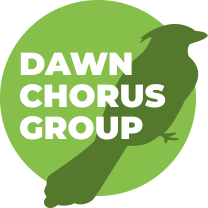In a world where communities often face various challenges, the concept of Asset-Based Community Development (ABCD) emerges as a beacon of hope and empowerment. Pioneered by John P. Kretzmann and John L. McKnight, this approach, articulated in their seminal work “Building Communities from the Inside Out,” turns the traditional view of community development on its head. Rather than concentrating on what communities lack, ABCD focuses on leveraging the existing strengths, talents, and resources within these communities. This blog aims to demystify the ABCD model and explore its transformative potential.
Deficits vs. Strengths
Traditionally, community development has been synonymous with a needs-based approach. This perspective primarily views communities in terms of their deficiencies – poverty, unemployment, crime, etc. Such an approach, often adopted by institutions like universities, paints a picture of communities as clusters of problems requiring external assistance. This not only leads to a dependence on outside help but also overshadows the intrinsic capabilities and assets inherent in every community. However, the ABCD model proposes a radical shift from this paradigm.
Asset-Based Community Development is predicated on the idea that every community, no matter how challenged, possesses a wealth of assets. These assets are not just physical resources but include the skills, knowledge, and passions of the individuals who live there. ABCD proposes a more optimistic and constructive approach, focusing on six key community assets:
- Individuals: Every person has unique gifts and skills that can be harnessed for community betterment.
- Associations: Local groups and networks are pivotal in leveraging collective action.
- Institutions: Businesses, nonprofits, and public entities play a crucial role but as facilitators and resource providers rather than decision-makers.
- Physical Assets: Utilizing local land, buildings, and infrastructure in innovative ways can open new avenues for community development.
- Exchange: A thriving local economy built on the exchange of skills and goods keeps resources within the community.
- Culture and Stories: The narratives and cultural wealth of a community are integral to its identity and strength.
The implementation of ABCD begins with the recognition and mapping of these assets. The next step is connecting and mobilizing these assets for collective action. This process not only fosters sustainable community development but also ensures that all voices within the community are heard and valued. It shifts the residents from being passive recipients of external aid to active architects of their community’s future. This shift not only bolsters the local economy but also instills a sense of pride and ownership among community members.
Impacts
ABCD’s impact is profound and far-reaching. It empowers communities, encouraging them to rely on their inherent strengths. This approach also ensures that development initiatives are sustainable since they are built on existing community assets. Additionally, by focusing on asset-based strategies, communities can foster a more vibrant and self-reliant local economy.
To practically apply the ABCD model, communities should start by identifying their unique assets. This process involves not just mapping physical resources but also recognizing the skills and passions of individuals and groups. Collaboration is key – by connecting these assets, communities can harness their collective power for the greater good. Inclusivity is crucial, as every member’s voice and contribution add value to the collective effort.
Asset-Based Community Development offers an optimistic and effective pathway for community development. It’s an approach that respects and leverages the inherent capabilities of communities, leading to more sustainable and empowering outcomes. ABCD teaches us to look within for solutions and strengths, reminding us that even in the most challenging situations, communities hold the key to their own transformation. This approach, therefore, is not just a model of development; it’s a movement towards self-reliance and communal resilience.
Further Reading
Check out this resource from our friends over at the Community Toolbox
Jumpstart Your Funding
Empower your nonprofit with the right funding strategy! Our Nonprofit Revenue Readiness Meter is designed to assess your organization’s current financial health and identify the most effective funding models for your cause. By participating, you’re taking a critical step toward financial clarity and sustainability. Join other forward-thinking leaders in the nonprofit sector and take the survey today!
About the Author
Jon Scaccia, with a Ph.D. in clinical-community psychology and a research fellowship at the US Department of Health and Human Services, is renowned for his expertise in public health systems and quality programs. He specializes in implementing innovative, data-informed strategies to enhance community health and development. Jon’s significant contribution to public health is underscored by his creation of the R=MC² readiness model, which aids organizations in effectively navigating change. And he loooooooves assets!

